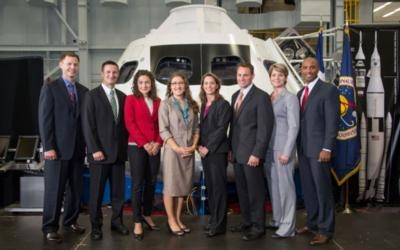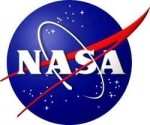Thu, Aug 22, 2013
NASA, International Community United In Support Of 'Bold' Space Exploration Program
NASA Administrator Charles Bolden on Tuesday formally welcomed the eight newest candidates to the astronaut corps and unveiled a space exploration roadmap that makes clear the global community is working together on a unified deep space exploration strategic plan, with robotic and human missions to destinations that include near-Earth asteroids, the moon and Mars.

At NASA's Johnson Space Center in Houston, the members of the 2013 astronaut class spoke with reporters about their new roles and their desire to help the agency push the boundaries of exploration and travel to new destinations in the solar system. These next-generation American astronauts will be among those who will have the opportunity to fly on new commercial space transportation systems that are now under development. They also will be among those to plan and perhaps carry out the first-ever human missions to an asteroid and Mars.
"This class joins a distinguished and elite group of Americans who have carried out historic missions to the moon, deployed space telescopes and built an orbiting laboratory the size of a football field, where U.S. astronauts have continuously lived, worked and conducted research for more than a dozen years now," said Bolden. "They are being asked to carry on this extraordinary legacy and ensure the United States remains the world's leader in exploration and scientific discovery -- carrying with them America's hopes, dreams and curiosity deep into space, first to an asteroid and one day on to Mars."

The 2013 astronaut candidate class comes from a pool of 6,000 applicants, the second largest in NASA history. Half of the selectees are women, making this the highest percentage of female astronaut candidates ever selected for a single class. The group will participate in extensive technical training at space centers and remote locations around the world to prepare for missions beyond low-Earth orbit.
Bolden also spoke about the updated Global Exploration Roadmap (GER), released publicly Tuesday. The roadmap reflects the work of 12 space agencies of the International Space Exploration Coordination Group. It highlights the international space community's shared interest in pursuing deep space exploration and reflects the degree of international cooperation on a unified deep space exploration strategic roadmap.
The shared global vision, as laid out in the GER, includes:
- An examination of the critical part the International Space Station plays in deep space exploration;
- Robotic and human missions to destinations that include near-Earth asteroids, the moon and Mars;
- Validation of the vital role of NASA's asteroid mission in advancing the capabilities needed to explore Mars and the economic and societal value such exploration can bring; and
- A conceptual scenario that demonstrates how missions in the lunar vicinity, including NASA's asteroid initiative, pave the way for international missions to Mars in the 2030s, while enabling important discoveries along the way.
(Uncaptioned image provided by NASA)
More News
“Setting eight speed records this quickly following its August entry into service is a powerful testament to the tremendous capabilities of this aircraft. We are already seei>[...]
On-Course Indication An indication on an instrument, which provides the pilot a visual means of determining that the aircraft is located on the centerline of a given navigational t>[...]
Aero Linx: WW1 Aeroplanes, Inc. WORLD WAR 1 AEROPLANES was founded by Leo Opdycke in 1961 and incorporated as a federally recognized 501 (c) (3) not-for-profit corporation in 1979,>[...]
Pilot Reported That He Purchased The Airplane Earlier That Day Analysis: The pilot reported that he purchased the airplane earlier that day and completed a condition inspection tha>[...]
Also: Abu Dhabi’s 1st Vertiport Network, Anduril-EDGE Partner, Vertical Permit/eVTOL Regs Sierra Space’s Dream Chaser spaceplane has cleared another round of pre-flight>[...]
 Aero-News: Quote of the Day (11.18.25)
Aero-News: Quote of the Day (11.18.25) ANN's Daily Aero-Term (11.18.25): On-Course Indication
ANN's Daily Aero-Term (11.18.25): On-Course Indication ANN's Daily Aero-Linx (11.18.25)
ANN's Daily Aero-Linx (11.18.25) NTSB Final Report: Shoemaker Ronald R Pazmany PL-2
NTSB Final Report: Shoemaker Ronald R Pazmany PL-2 Airborne-NextGen 11.18.25: Dream Chaser Preps, Joby eTurbine, UAE Flt Test
Airborne-NextGen 11.18.25: Dream Chaser Preps, Joby eTurbine, UAE Flt Test




